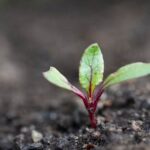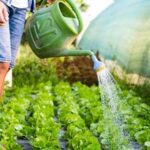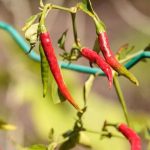Are you considering starting a vegetable garden in West Virginia? Vegetable gardening in West Virginia offers a unique set of challenges and opportunities due to the state’s climate and soil conditions. Whether you are a beginner or experienced gardener, understanding the specific factors that affect vegetable gardening in this region is essential for a successful harvest.
West Virginia’s diverse climate and soil conditions present both advantages and challenges for vegetable gardening. With the right knowledge and techniques, you can cultivate a thriving garden that provides an abundance of fresh, homegrown produce. From choosing the right vegetables to understanding pest management, this article will provide valuable insights and tips for vegetable gardening in West Virginia.
In this comprehensive guide, we will explore the climate and soil conditions in West Virginia that are conducive to vegetable gardening. We will also discuss the best vegetables to grow in this region, offer tips for starting a successful garden, and provide guidance on maintaining, managing pests and diseases, harvesting, preserving your garden’s bounty, as well as community resources and events for vegetable gardeners in West Virginia.
So let’s get started on your journey to creating a vibrant and productive vegetable garden in the beautiful state of West Virginia.
Climate and Soil Conditions in West Virginia for Vegetable Gardening
When it comes to vegetable gardening in West Virginia, understanding the climate and soil conditions is crucial for a successful harvest. West Virginia has a humid continental climate, with hot summers and cold winters. The state also experiences frequent rainfall throughout the year, which can impact the soil’s moisture levels. When choosing vegetables to grow in West Virginia, it’s important to consider these climate factors.
In terms of soil conditions, West Virginia has a diverse range of soil types including loamy, clay, and sandy soils. The pH levels of these soils can vary, so it’s essential to conduct a soil test to determine the acidity or alkalinity of your garden plot. This will help you make informed decisions about which vegetables are best suited for your specific soil conditions.
Some of the best vegetables to grow in West Virginia include tomatoes, peppers, beans, squash, and leafy greens like lettuce and spinach. These vegetables thrive in the state’s climate and soil conditions, making them relatively easy to grow for both novice and experienced gardeners. Additionally, root vegetables such as carrots and potatoes also do well in West Virginia’s fertile soils.
It’s worth noting that some areas of West Virginia may have microclimates that differ from the general climate of the state. For example, higher elevation regions may have cooler temperatures and shorter growing seasons. Therefore, it’s essential for vegetable gardeners in West Virginia to research their specific location and tailor their gardening practices accordingly.
| Vegetables | Climate/Sunlight Needs | Soil Type |
|---|---|---|
| Tomatoes | Full sun | Well-draining loamy soil |
| Peppers | Full sun | Sandy or loamy soil with good drainage |
| Squash | Full sun | Fertile loamy soil |
Best Vegetables to Grow in West Virginia
When it comes to vegetable gardening in West Virginia, there are several vegetables that thrive in the state’s climate and soil conditions. Some of the best vegetables to grow in West Virginia include tomatoes, peppers, cucumbers, squash, green beans, and leafy greens such as lettuce and spinach. These vegetables are well-suited to the growing season and soil makeup in West Virginia, making them excellent choices for home gardeners.
Tomatoes are a popular choice for vegetable gardening in West Virginia due to their versatility and ability to thrive in the state’s climate. There are many varieties of tomatoes that can be successfully grown in West Virginia, including beefsteak, cherry, and Roma tomatoes. Peppers, especially bell peppers and hot peppers, also do well in West Virginia’s warm summers. Cucumbers and squash are both prolific growers in the state’s fertile soil and ample sunlight.
Leafy greens like lettuce and spinach can be grown throughout much of the year in West Virginia, with some varieties even tolerating light frosts. Green beans are another great choice for West Virginia gardens, producing abundant yields during the summer months. When planning a vegetable garden in West Virginia, it’s important to choose crops that are suited to the local climate and growing conditions for a successful harvest.
In addition to these vegetables, other crops like potatoes, carrots, radishes, and herbs such as basil and cilantro can also be grown successfully in West Virginia. By choosing a variety of vegetables that complement each other’s growing needs, gardeners can maximize their yield and enjoy a bountiful harvest throughout the growing season.
| Vegetable | Growing Conditions |
|---|---|
| Tomatoes | Warm summers with ample sunlight |
| Peppers | Thrive in warm summers; bell peppers & hot peppers do well |
| Cucumbers & Squash | Prolific growers; suited to fertile soil & ample sunlight |
Tips for Starting a Successful Vegetable Garden in West Virginia
When it comes to starting a successful vegetable garden in West Virginia, there are several important factors to consider. The first step is to choose the right location for your garden. Look for an area that receives at least 6-8 hours of sunlight per day and is well-drained. It’s also important to consider the proximity to a water source for irrigation.
Choosing the Right Vegetables
Selecting the right vegetables to grow in West Virginia is crucial for a successful garden. Consider the climate and soil conditions when choosing which vegetables to plant. For example, cool-season crops such as lettuce, spinach, and peas tend to do well in West Virginia’s climate, while warm-season crops like tomatoes, peppers, and cucumbers also thrive during the summer months.
Soil Preparation
Preparing the soil is essential for a successful vegetable garden. Conduct a soil test to determine its pH level and nutrient content. Amend the soil as needed with organic matter such as compost or aged manure to improve its structure and fertility. This will help provide a healthy environment for your vegetables to grow.
By following these tips for starting a successful vegetable garden in West Virginia, you can set yourself up for a bountiful harvest of fresh, homegrown produce. With careful planning and proper care, you can enjoy the satisfaction of growing your own vegetables right in your backyard.
How to Maintain and Care for Your Garden in West Virginia
Maintaining and caring for your vegetable garden in West Virginia is essential for a successful harvest. Here are some important tips and tasks to keep in mind:
1. Watering: In West Virginia, the climate can be somewhat humid, which means that regular and consistent watering is necessary for your vegetable garden. Be sure to water deeply, especially during hot, dry periods, to ensure that the roots of your plants receive adequate moisture. Consider investing in a drip irrigation system to make watering more efficient.
2. Weeding: Regular weeding is crucial for maintaining a healthy vegetable garden in West Virginia. Weeds not only compete with your vegetables for water and nutrients but can also harbor pests and diseases. Use mulch to help suppress weed growth and minimize the need for constant weeding.
3. Fertilizing: Test your soil to determine its nutrient levels and pH before fertilizing your vegetable garden. Once you have this information, you can apply the appropriate fertilizer to ensure that your plants have the necessary nutrients for healthy growth.
4. Mulching: Mulching is important for conserving soil moisture, suppressing weeds, and maintaining even soil temperatures in West Virginia’s variable climate. Consider using organic mulches such as straw or shredded leaves to improve soil quality as they decompose.
5. Support Systems: As your vegetable plants grow, consider providing support systems like trellises or cages for vining crops like tomatoes or cucumbers, as well as staking taller plants to prevent them from bending or breaking under their own weight.
By following these maintenance tips, you’ll be well on your way to enjoying a bountiful harvest from your vegetable gardening efforts in West Virginia.
Pest and Disease Management for Vegetable Gardens in West Virginia
When it comes to maintaining a successful vegetable garden in West Virginia, one of the biggest challenges that gardeners face is managing pests and diseases. However, with the right strategies and techniques, you can effectively protect your garden from these threats.
Here are some tips for pest and disease management in your West Virginia vegetable garden:
1. Regular Inspection: Regularly inspect your plants for any signs of pest infestation or disease. Look for holes in leaves, discolored spots, or wilting foliage. Identifying problems early on can help prevent them from spreading.
2. Companion Planting: Consider companion planting as a natural way to deter pests. Certain plants, such as marigolds or garlic, can help repel insects that may damage your vegetables.
3. Organic Pest Control: Opt for organic pest control methods whenever possible. This can include using natural predators like ladybugs or introducing beneficial insects such as lacewings to combat harmful pests.
4. Proper Watering and Fertilization: Overwatering or using too much fertilizer can make plants more susceptible to diseases. Be mindful of the specific watering and fertilization needs of each vegetable in your garden.
Remember that successful pest and disease management requires ongoing observation and proactive measures. By staying vigilant and employing these strategies, you can protect your vegetable gardening in West Virginia from potential threats.
Harvesting and Preserving Your West Virginia Vegetable Garden
Timing Your Harvest
When it comes to harvesting your vegetable garden in West Virginia, timing is crucial. Different vegetables have different peak harvest times, so it’s important to keep a close eye on your plants to ensure that you pick them at the right moment. For example, tomatoes should be picked when they are fully ripe and have a deep, even color, while root vegetables like carrots and potatoes should be harvested when they have reached their full size.
Preservation Methods
Once you’ve harvested your bountiful crop, it’s time to think about how to preserve it for future use. There are several methods of preserving vegetables that are popular among gardeners in West Virginia.
Canning is a great way to store vegetables for long periods of time, while freezing is a quick and easy method that preserves the flavor and nutrients of the produce. Another popular option is pickling, which adds a tangy flavor to vegetables and extends their shelf life.
Sharing Your Harvest
One of the joys of having a successful vegetable garden in West Virginia is sharing the fruits of your labor with friends, family, and neighbors. If you find yourself with an abundance of produce, consider hosting a vegetable swap or donating excess vegetables to local food pantries or community organizations. Not only will this help reduce food waste, but it also fosters a sense of community among fellow vegetable gardeners in West Virginia.
Community Resources and Events for Vegetable Gardeners in West Virginia
In conclusion, vegetable gardening in West Virginia offers a wonderful opportunity for individuals to connect with nature, provide fresh produce for themselves, and even become part of a vibrant gardening community. The climate and soil conditions in the state may present challenges, but with the right knowledge and preparation, it is possible to have a successful vegetable garden.
By choosing the best vegetables to grow in West Virginia and following tips for starting and maintaining a garden, individuals can enjoy a bountiful harvest.
One key aspect of vegetable gardening in West Virginia is taking advantage of the community resources and events available to gardeners. Local gardening clubs, extension services, farmers’ markets, and workshops offer valuable support and information for those looking to improve their skills and knowledge. Additionally, joining a community garden can provide access to shared resources and the opportunity to learn from more experienced gardeners.
Furthermore, understanding pest and disease management for vegetable gardens in West Virginia is crucial for maintaining a thriving garden. By implementing organic methods of pest control and regular monitoring for signs of disease, gardeners can protect their crops without resorting to harmful chemicals. With these considerations in mind, individuals interested in vegetable gardening in West Virginia can look forward to an enjoyable and rewarding experience that benefits both themselves and their local communities.
Frequently Asked Questions
What Vegetables Grow Best in West Virginia?
In West Virginia, vegetables that grow best include tomatoes, peppers, beans, and squash. These veggies thrive in the state’s climate and soil conditions, making them ideal choices for gardeners.
When Should I Start My Garden in West Virginia?
The best time to start a garden in West Virginia is typically in late April to early May. This allows for the last frost to pass and gives sufficient time for warmer weather for plants to grow.
What Gardening Zone Is West Virginia?
West Virginia is located within USDA Hardiness Zones 5 and 6. This means that the state experiences cold temperatures in winter, which influences the types of plants that can thrive in this region. Gardeners should select plants suitable for these zones to ensure successful growth.

If you’re looking to get into vegetable gardening, or are just looking for some tips on how to make your current garden better, then you’ve come to the right place! My name is Ethel and I have been gardening for years. In this blog, I’m going to share with you some of my best tips on how to create a successful vegetable garden.





